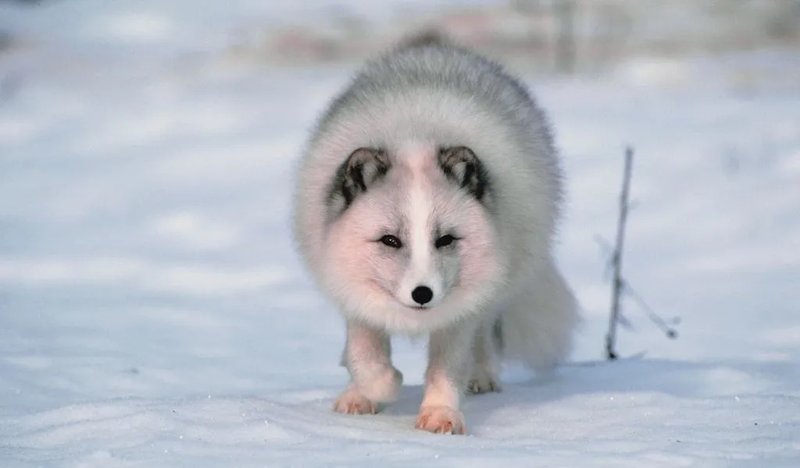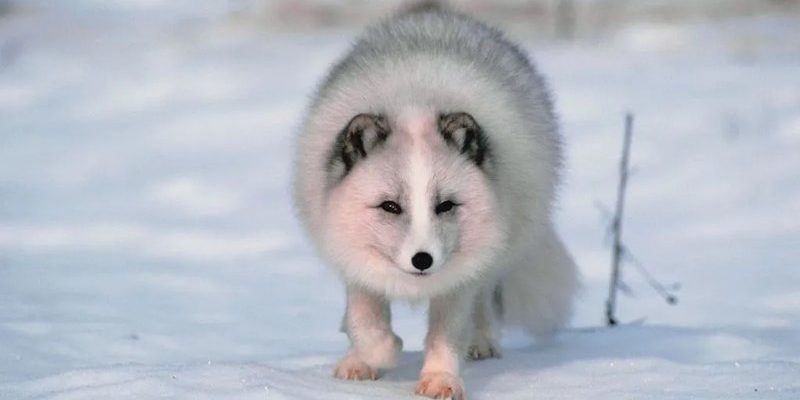
The truth is, while Arctic foxes are generally not aggressive towards people, they do have some unique traits and behaviors worth considering. So, let’s dive into the world of the Arctic fox and explore if these charming animals could ever be a threat to us.
Understanding the Arctic Fox
The Arctic fox, known scientifically as *Vulpes lagopus*, is a small mammal that resides in the coldest regions of the Northern Hemisphere. These animals are about the size of a domestic cat, weighing between 6 to 24 pounds. They’re easily recognizable by their thick, fluffy fur that changes color with the seasons—from white in winter to brown or gray in summer.
Diet-wise, Arctic foxes are opportunistic eaters. They primarily feast on small mammals, birds, and carrion, often scavenging leftover meals from polar bears. Interestingly, they have an incredible sense of hearing, which helps them locate prey beneath the snow. They’re like little hunters with built-in snowshoes and sharp ears, navigating their frosty home with ease.
You might be wondering why knowing about their habitat and diet is important. Understanding how Arctic foxes live can help paint a clearer picture of their behavior, especially when they encounter humans.
Are Arctic Foxes Aggressive?
Here’s the thing: Arctic foxes aren’t usually aggressive animals. They tend to be pretty shy and reserved around humans. In fact, they often see us as strange, large creatures and prefer to keep their distance. Most encounters between Arctic foxes and people end without any fuss at all, as the fox will simply trot away if it feels threatened.
That said, there are exceptions. If an Arctic fox feels cornered or if it’s protecting its young, it might act defensively. It can employ a series of warning barks or growls, and in rare cases, it may even try to bite. But honestly, these situations are quite uncommon.
So, if you’re hiking through their territory, just keep your distance. If you do spot one, enjoy the moment! It’s a privilege to see these beautiful creatures in their natural habitat.
Diseases and Risks
While Arctic foxes aren’t a direct threat, they can carry diseases that may pose a risk to humans. One of the most notable is rabies, which can affect their behavior and make them more unpredictable. Rabies is a viral disease that can be transmitted to humans through bites or scratches. However, it’s essential to remember that rabies in Arctic foxes is rare.
Another concern is echinococcosis, a parasitic infection that can be contracted if humans come into contact with the feces of infected animals. This might sound alarming, but the chances of encountering this situation while enjoying nature are relatively low, especially if you practice good hygiene and avoid close contact with wildlife.
Always keep your distance from wild animals and refrain from feeding them. It’s better for both you and them!
Behavior Around Humans
You might be curious about how Arctic foxes behave when they do encounter humans. Generally speaking, they are quite curious creatures. When they see a human, they might stop and stare, tilting their heads in that adorable way that makes them look like they’re trying to figure you out.
In areas where Arctic foxes have had frequent interactions with people, like tourist spots, they may become a bit bolder. Some folks have reported Arctic foxes approaching them, wondering if they have tasty snacks. While this behavior can seem cute, it’s a reminder that feeding wildlife can create unwanted habits.
When Arctic foxes approach, it’s best to remain calm and avoid sudden movements. Just let them be—they’ll likely lose interest and wander off to continue their day.
Conservation and Respecting Their Space
Arctic foxes are not currently considered endangered, but their populations can be affected by environmental changes and human activity. Climate change is a significant threat, as it alters their habitat and reduces the availability of food sources. Maintaining a respectful attitude toward these animals is crucial, especially if we want to ensure they thrive for years to come.
When visiting their habitats, following local guidelines can make a big difference. Stay on marked trails, avoid disturbing their dens, and keep a safe distance. Respecting these beautiful creatures and their environment is part of responsible wildlife observation.
In summary, while Arctic foxes are fascinating and charming creatures, they are generally not dangerous to humans. They’re shy, curious, and mostly prefer to stay at a safe distance. However, just like any wild animal, it’s essential to approach them with respect and awareness.
So, the next time someone asks whether the Arctic fox can be dangerous, you can confidently share your new knowledge. Enjoy the beauty of the Arctic fox from afar, and appreciate the amazing world of wildlife that exists all around us.

